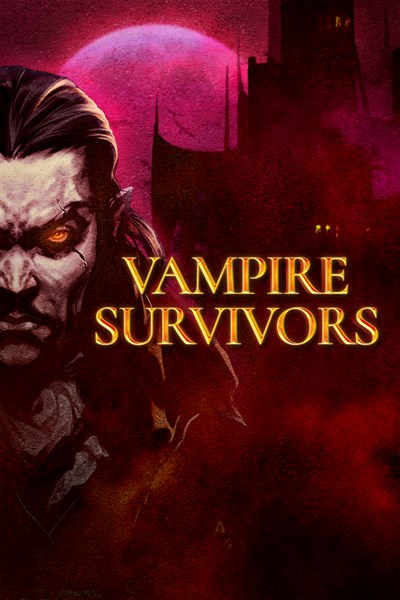
Since its unpretentious launch in mid-2022 on Game Pass for PC, poncle’s Vampire Survivors has ridden wave upon garlicky wave of critical and commercial success. Most recently, the game received not one, but two accolades at this year’s BAFTA Games Awards: Game Design and the biggest prize of all, Best Game.
It’s the decadent core loop of shoot, survive, die, repeat that has left countless Vampire Survivors players — including Xbox boss and superfan Phil Spencer — utterly enamored. Its early presence on Xbox and PC Game Pass also ensured millions could immediately get involved with this surprise hit new title.

But Vampire Survivors was not initially built to accommodate for this scale of greatness. The brainchild of creator Luca Galante was initially built for PC platforms using web technologies, specifically JavaScript. Poncle Tech Director Sam McGarry tells us that the launch version of Vampire Survivors was “basically a browser game.”
The build wasn’t running very well on platforms different to PC, players were running into issues across different devices, and addressing those problems quickly became a priority for the team. Once it became the smash hit we know it as now, it became clear it needed a new engine – something fans asked about from early on. It turns out, the team made that happen so seamlessly, many didn’t know it had even happened.
“The overall goal was for players not to notice,” McGarry says. “Even to this day, there are still players that don’t realize that the engine is already out there and has been since launch on Xbox, so we still have differences to sort out, but I think we did a pretty good job.”

Xbox was the first platform that poncle launched the engine-enhanced Vampire Survivors on, and McGarry tells us that one of the main challenges the team faced, and still faces, is maintaining level parity between different versions of the game in parallel — the new engine on Xbox and the original Javascript version on PC.
“Making sure that players can actually go between Xbox platforms and continue their game is very important to us,” McGarry says. “And we’re also trying to maintain that quality so you can jump between two different versions of the game without feeling like you’re playing different copies of the game, without having any technical issues or anything.”
All that effort has been worth it, however – McGarry says the game’s addition to Game Pass has been crucial in how it became a word of mouth success. “If you look at a screenshot of Vampire Survivors, you might not get drawn into the game just by the way it looks,” McGarry says. “And we find often that early game players don’t always get the hook of it until they’ve gotten further in. That’s when we really see that people are like, ‘ah, okay, I get the game now. People will also often play it, bounce off, and then come back. The presence on Game Pass helps us bring a lot more players in through the doors and lets them experience the game.

“The other great thing about [Game Pass] is that it was available via the Cloud as well. So people are able to play not just at home on their console or on their PC, but out and about or… on the toilet on their phone. That was relatively painless process too; we put the game out, and ticked a box, and then it was available on the Cloud just like that basically.”
A development team building two versions of the game across Xbox and PC is leagues away from the before times of Galante working independently on Vampire Survivors. In the last twelve months, the poncle team’s development has mirrored that of a Xenomorph — emerge quickly and grow fast. But despite that rapid expansion, the actual workflow hasn’t really changed all that much, testament to the game’s solid foundations.
“Ultimately, it’s just that we have more people in the process now,” McGarry explains. “So it still starts at Luca and filters through, he’s doing that work on that PC version alongside writers and other teams helping with the creative side of things. We are then taking that work and replicating it in the new engine. Having that dual engine setup has helped us keep that same workflow in a sense, without disrupting the creative part of the very start of the chain.”
Poncle is keen to highlight that while Galante still sits atop of the creative tree and the majority of the game’s increasingly wild ideas come from him, Vampire Survivors is now created by a team that all provide input and feedback.
“The more people that we bring on board, the more we can take off Luca’s plate,” says poncle Lead Game Developer Adam Goodchild. “Throughout last year, everyone tried to take as much as they could so Luca could focus on the creative side.

“The original goal of what Luca set out to make hasn’t changed at all. It’s just the pace at which we can do it is a lot different because there’s more of us, and everybody’s got a role now.”
Vampire Survivors is still dishing out updates and content regularly. The first premium DLC, Legacy of the Moonspell, launched in December, and the second, Tides of the Foscari, launches today.
These paid DLC packs are thematically based in their own worlds — Moonspell took us to the snow-kissed mountains of “the east,” while Foscari promises a lush, vibrant forest concealing a magic academy with absolutely nothing unusual about it. This was always the plan for Vampire Survivors, however, Galante and the team still firmly believe that any content that changes or enhances the core gameplay loop should just be included in free content updates, delivered to every player that has either bought the game, or is playing via Game Pass. We can’t say too much, but the team has plenty in store in that department too.
“For anyone that can’t or doesn’t want to get the DLC, you’re still getting other updates at the same time,” McGarry adds. “We’re also constantly adding little things to the base game, adding more achievements… if only to give Phil Spencer something new to finish off.”
Vampire Survivors: Tides of the Foscari is available across Xbox and PC platforms today.


Vampire Survivors
Poncle
316
$4.99
$3.99



